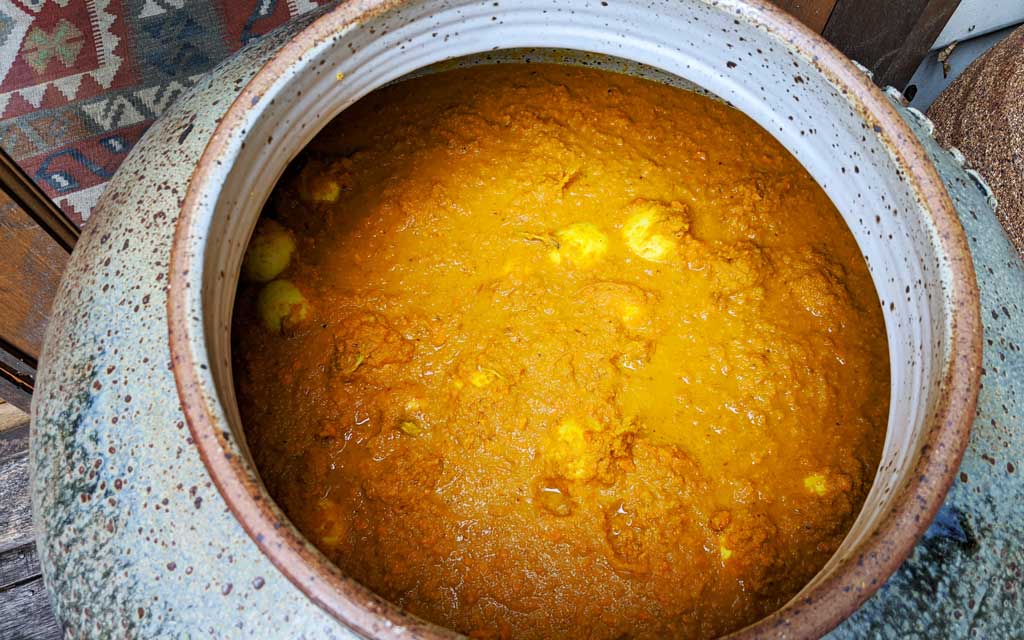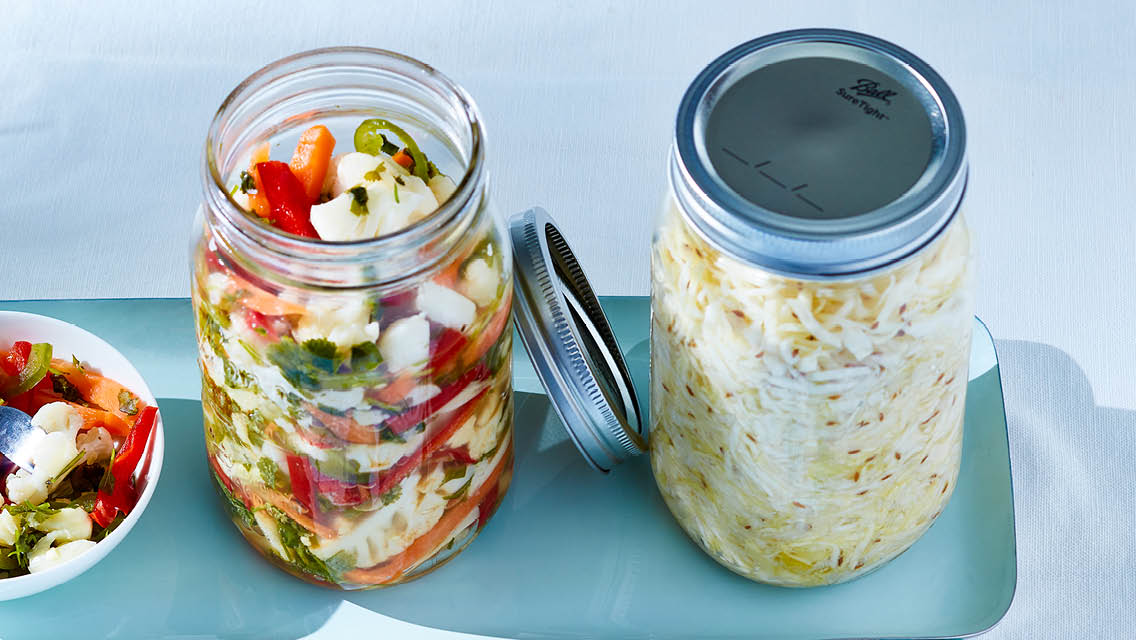Most of us can name yogurt and pickles as examples of fermented foods, but Sandor Ellix Katz’s new book, Sandor Katz’s Fermentation Journeys, reveals a wide world of ferments beyond what you can find at the supermarket. His more than 60 recipes include Mexican tepache (a fermented pineapple drink) and Burmese lahpet (pickled tea leaves) — and much more.
A self-described “fermentation revivalist,” Katz is the author of five additional books on the flavors and nutritional benefits of fermentation, food sovereignty, and fermentation as a metaphor for human culture.
His latest work was born from his global travels dedicated to learning and teaching about fermentation. And it’s more than just a cookbook: Katz also describes how fermentation techniques have evolved and introduces us to the people who are keeping the tradition alive.
We spoke with Katz about his journey.
Experience Life | Do you have any new favorite ferments thanks to your adventures? And was there a ferment that truly surprised even you?
Sandor Katz | I have a lot of favorites! Fermentation creates compelling flavors, and many of the ferments I have been exposed to leave me craving their unique flavors and trying to recreate them.
The biggest surprises have been types of ferments that I knew from one cultural context that unexpectedly turned up in others. For instance, I have known about the Japanese soybean ferment natto for decades but did not expect to find something similar in China or Burma. In these contexts, the fermented soybeans are typically combined with other seasonings and dried, rather than being eaten fresh and sticky, as they are in Japan.
I’ve also tried and learned about natto-like seasonings from Nagaland in northeastern India and from West Africa.
EL | How do you think eating fermented food has affected your own health? And do certain ferments provide specific health benefits — sauerkraut in contrast to miso, for instance?
SK | I’ve been living with HIV for 30 years, and I’m happy to report that my health remains robust. I certainly cannot attribute this to fermented foods alone, since I’ve been on antiretroviral drugs for 22 years. However, many people I meet who are on drugs like the ones I take report chronic digestive problems, which I have never experienced.
Each ferment has its own character and nutritional qualities, but there are clear patterns: Nutrients are more easily bioavailable in fermented foods than in nonfermented equivalents. Ferments often have higher levels of certain vitamins, as well as micronutrients.
And the probiotic bacteria in live ferments (not cooked or heat-processed after fermentation) can build gut biodiversity and thereby improve digestion, immune function, and potentially even mental health.
Because each type of ferment has its own distinctive microbial communities, incorporating a range of different fermented foods and beverages means greater biodiversity.
EL | Your book describes traditional fermentation techniques and customs, suggesting that fermentation is a way people can connect with the past. That said, are there any new recipes or innovations in fermentation that you find especially exciting?
SK | The primary focus of Fermentation Journeys is traditional foods around the world, but it also includes many innovative applications.
One that I really love, that I learned about from a fermentation enthusiast I met in Tasmania, and that has become a permanent feature in my kitchen, is using a paste made of turmeric, garlic, turnips, and salt as a perpetual pickling medium. I bury different vegetables in it, and when I pull them out a week or two later, they are deliciously pickled, flavored, and colored by the turmeric.
Traditional fermentation processes can be great sources of inspiration, but creative practitioners inevitably experiment and embellish them with their own twists, as many of the examples in the book illustrate.
Perpetual Turmeric Pickling
Turmeric Paste by Adam James

Makes 1 1/2 quarts | Prep time About 1 month for paste; at least 1 week for fermenting vegetables
Ingredients
- 14 oz./400 grams turmeric root
- 10 oz./300 grams garlic cloves, peeled
- 14 oz./400 grams Hakurei or other small, tender turnips
- 3 tbs. salt (roughly 4 percent of the weight of the turmeric, garlic, and turnips)
- 2 cups/500 milliliters water
- About 3/4 pound/375 grams vegetables (daikons, turnips, carrots, celery, or others) to pickle once the pickling medium is mature
Directions
- Using a food processor or an immersion blender, grind the turmeric root, garlic cloves, turnips, and salt with just enough water to form a thick paste.
- Ferment the paste in a 2-quart jar or crock for about a month, stirring periodically. For best results, protect the surface of the paste from air with an interior lid or a layer of plastic.
- After a month or so, the paste should be active enough to start using as a fermentation medium. Simply submerge the whole vegetables. Turnips and daikons work really well since they are not too dense.
- Depending on the temperature, the size and density of the vegetables, and how vigorous the medium is, the vegetables should be fermented in about a week. The resulting pickles take on the intense yellow (another reason why white vegetables are good), shrivel slightly due to water loss, and have a wonderful acidic and earthy crunch.
- This paste itself can be used on its own: as a condiment (great with mussels and oysters); as a base for a salad/vegetable dressing (thin with olive oil, water, and a dash of rice vinegar); as an excellent addition to fire ciders and fermented hot sauces; or made into my possible all-time favorite curry paste, by simply cooking it down with fresh puréed ginger, then adding a tin or two of coconut cream and some good (preferably homemade) fish sauce and fresh lemon or lime. You can also use it as a base for brown rice congee or as an addition to shio-koji for an intense, fresh hit of zingy umami.
This recipe is from Sandor Katz’s Fermentation Journeys by Sandor Ellix Katz (Chelsea Green Publishing, October 2021) and is reprinted with permission from the publisher. Image by: Sandor Katz.






This Post Has One Comment
What can be done with the fermentation paste after removing the vegetables? Can you add other vegetables for fermentation, use it as a condiment, or is it discarded?